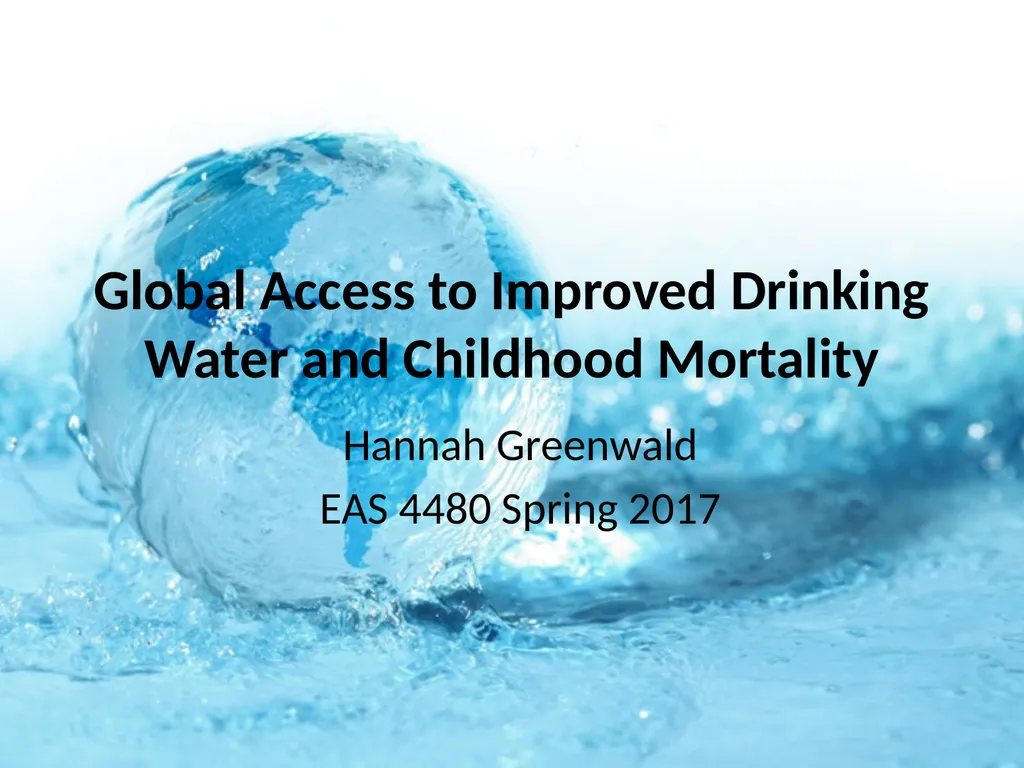
Author : calandra-battersby | Published Date : 2025-05-10
Description: Global Access to Improved Drinking Water and Childhood Mortality Hannah Greenwald EAS 4480 Spring 2017 Motivation: Childhood Mortality 5.9 million children under the age of 5 died in 2015 Globally, 2,000 children under the age of five dieDownload Presentation The PPT/PDF document "" is the property of its rightful owner. Permission is granted to download and print the materials on this website for personal, non-commercial use only, and to display it on your personal computer provided you do not modify the materials and that you retain all copyright notices contained in the materials. By downloading content from our website, you accept the terms of this agreement.
Here is the link to download the presentation.
"Global Access to Improved Drinking Water and"The content belongs to its owner. You may download and print it for personal use, without modification, and keep all copyright notices. By downloading, you agree to these terms.













